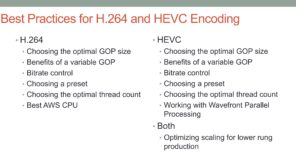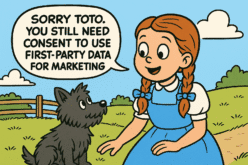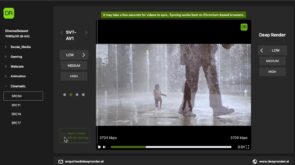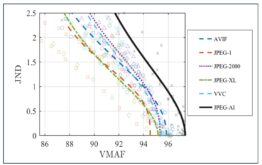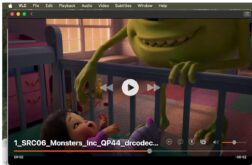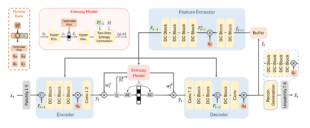If you’re looking for the highest quality H.264 output, and encode on the Apple platform, you should try the x264Encoder encoder, which you can download here. This article contains comparison images that accompany my comparison review for Digital Content Producer (link to come).
This review debuts a new streaming test video comprised of clips from stock footage company Artbeats and from independent producer Connie Simmons of SimmonsArt, from her award wining PBS Series Landscapes through Time with David Dunlop. My old test tape was comprised of DV, HDV and AVCDH footage, and the footage was often shot under less than ideal conditions. I wanted to step up the quality of my starting point, and thank both Artbeats and Ms. Simmons for supplying their high quality clips. Since some of the source clips lacked audio, I filled in the blanks with a track from the always handy SmartSound collection.
You can view the clips themselves at http://www.doceo.com/h264comps/Main.html. As you’ll see, there are about 25 clips in the test file; on this page, I’ll display four or five of the scenes most representative of the quality disparity between the two codecs.
Contents
640×360@750 kbps
This was the easiest configuration that I tested; in low motion sequences, the difference between the Apple and x264 codec is minor; once the motion or scene complexity picks up, x264 pulls far head. In this talking head shot, the two codecs are close.
x264 starts to pull ahead in the higher motion barrel roll event.
This is a simulated flyover of Bagdad; lots of motion and high detail. Again, the Apple codec shows the strain.
This is a time lapse shot; lots of detail and motion. Again, the difference is very noticeable.
720p@800 kbps
I encoded my previous 720p test file at 800 kbps, but there’s much more motion in this one so I bumped the data rate 1.5 mbps. Still, even at 800kbps, x264 can produce presentable quality at many clips, while the Apple codec completely falls apart.
720p@1500 kbps
Enough pain. Now let’s look at some comparisons at 1.5 mbps. Let’s start with a relatively low motion clip that the Apple codec clearly couldn’t stomach.
This was a slow zoom into a beautiful garden in France, and the Apple codec didn’t fare any better on a vegetarian diet (on a roll here).
Blocking is desirable in football; not so much when encoding football games.
To be fair, if motion was low, the Apple codec was credible. The overall point, though, is this. If you’re encoding with the Apple codec in Compressor, you should start with a clean slate and try the x264Encoder.
 Streaming Learning Center Where Streaming Professionals Learn to Excel
Streaming Learning Center Where Streaming Professionals Learn to Excel

